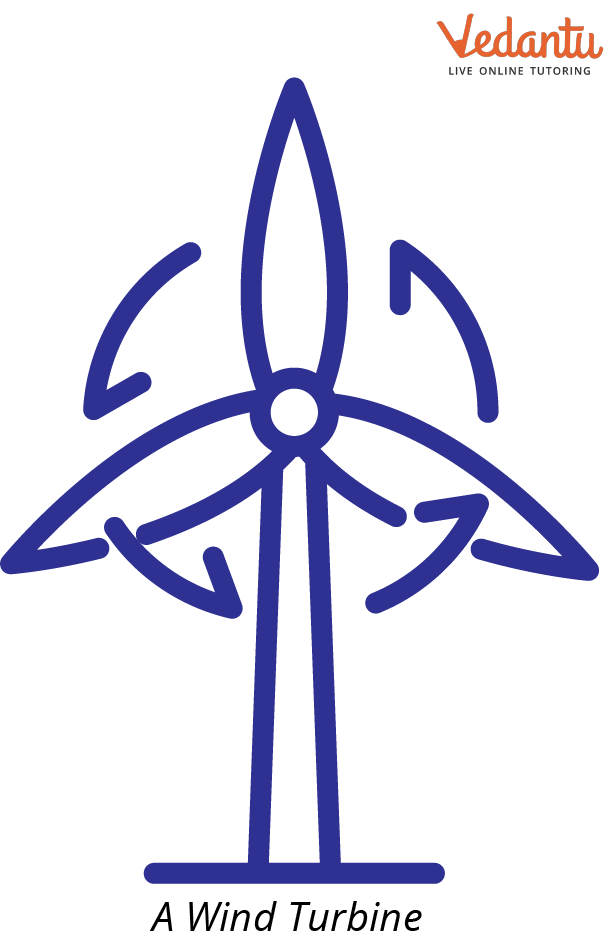




Introduction to Wind Energy
A wind turbine might have up to 8,000 unique parts. The usual height of a wind turbine tower is 300 feet, roughly the height of the Statue of Liberty. Wind turbine blades are typically 200 feet long. One of the world's most rapidly expanding energy sources is wind energy. Wind turbines transform the kinetic energy of the wind into mechanical energy.
The biggest turbines can generate enough electricity to run 600 houses. Hundreds of these turbines are put in lines in windy locations, such as a ridge, to construct wind farms. For some reason, people have criticised wind farms. Wind turbines are claimed to make noise and annoy surrounding neighbours. Also said to be affecting bat and bird populations.

A Wind Turbine
What is Wind Energy?
Wind energy is the energy available to the wind due to its motion. Wind turbine converts mechanical energy from the wind into electrical energy using generators. Wind energy is used to generate electricity by utilising kinetic energy provided by moving air. Wind energy is power generated by the wind's force. Over the next ten years, the wind energy market is expected to continue expanding. The majority of it is currently taking place in the US and Europe, but China and India are growing rapidly. These are the following applications of the wind energy:
A clean and renewable energy source is wind energy. Windmills use the mechanical energy of the wind to turn a generator and produce electricity. People are using wind energy to generate power for their homes as it is environmentally friendly.
Wind energy is cheap. One of the most affordable energy sources currently accessible is generated by utility-scale, land-based wind turbines. Additionally, as wind energy research and technology improve, its cost-competitiveness continues to rise.
Wind energy generation works effectively in functioning landscapes with many uses, including agriculture. Wind energy is easy to adopt in rural or isolated places, such as farms and ranches or coastal and island villages, where high-quality wind resources are frequently found.
How are Winds Formed?
The wind is airflow that is moving. The wind is created when the sun heats the atmosphere differently in different parts. As a result, warmer air expands and exerts less pressure when it is warmer than cooler. Cooler air particles, often more closely packed together, will drop into those low-pressure locations as the warmer air rises. The wind is created by the movement of air particles, which are moved by heating and cooling areas.
The air molecules hit the things and cause them to move, which is how wind causes objects to move. The wind is the constant movement of air from high to low pressure.

Wind Blowing
Conclusion
Wind power is a clean, renewable energy source. It has huge potential to meet a nation's energy needs and positive energy balance. The advantages of wind energy for the environment are highlighted compared to older technologies. Wind generates power without consuming fuel or polluting the environment. The primary source of renewable energy is wind.
FAQs on Wind Turbine Fun Facts
1. Who discovered wind energy?
Charles F. Brush built the first wind turbine in human history. There are currently onshore and offshore wind turbines installed all over the world. He was an American scientist who reportedly created the first automatic wind turbine to produce power in 1887.
2. What is the wind's primary source?
The sun is the source of the energy that propels wind. The sun heats the Earth unevenly, resulting in warm and cool regions.
3. Where is wind energy produced the most?
With more than 25% of the world's wind power capacity, China is the world leader in wind energy.









